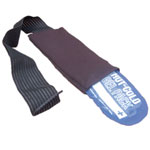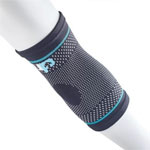Acute forearm pain occurs suddenly and includes fractures. Chronic forearm pain develops gradually, often involving nerve impingement or tendon inflammation.
Did your forearm pain occur suddenly or develop gradually over time?
Acute forearm pain & fractures
Acute forearm pain is sudden onset where you will be able to identify a particular incident that caused your injury.
Radius & Ulna Fracture (Broken Forearm)
A broken forearm is a fracture to either the radius or ulna bones that make up the forearm. Falling onto an outstretched arm is a comon cause. Symptoms vary depending on the extent and location of the fracture:
- Instant pain
- Swelling
- Tenderness over the specific site of the fracture.
- Deformity
Read more on Forearm fractures.
Acute compartment syndrome
A compartment syndrome occurs when the pressure inside a muscle or group of muscles increases, putting pressure on the surrounding sheath. An acute compartment syndrome occurs suddenly through bleeding or swelling within the compartment with symptoms of:
- Pain which becomes increasingly worse
- Numbness/tingling
If you suspect an acute compartment syndrome then seek medical advice immediately. Urgent surgery is often needed to release the pressure before long-term nerve damage occurs.
Gradual onset forearm pain
Radial Tunnel Syndrome
Radial tunnel syndrome, or radial nerve entrapment occurs when the radial nerve compresses in the tunnel it passes through. Symptoms are very similar to those of tennis elbow with outer elbow pain but also include:
- Pins and needles or tingling in the hand and outer forearm
- Tenderness may in the muscles of the upper forearm
- Aching in the wrist and upwards into the upper arm
More on Radial tunnel syndrome
Median Nerve Injury
Injury to the median nerve at the elbow causes symptoms in the forearm, wrist, and hand. Often it is another acute forearm injury which traps or tears the nerve. Symptoms include:
- Difficulty or inability to turn the handover or flex the wrist down (for injury above the elbow)
- Tingling or numbness in the forearm, thumb and the three adjacent fingers (injures below the elbow)
- Weakness gripping
- Inability to move your thumb across the palm
More on Median nerve injury
Forearm Splints/Compartment Syndrome
Forearm splints are similar to shin splints in the lower leg, although far less common. Pain develops gradually as a result of repetitive wris movement, contracting the forearm muscles.
- Symptoms consist of a dull forearm pain, which is minor initially, but increases as activity continues
- Often pin-pointed to the dorsal or back of the hand side of the forearm, midway between the wrist and elbow
- The patient may experience weakness in the wrist extensor muscles and tenderness deep in the forearm
- Attempting to bend the wrist backward against resistance reproduces pain
More on forearm splints
Volkmann’s Contracture
Volkmann’s Contracture is a deformity of the arm, wrist, and fingers, caused by an injury to the arm such as a fracture or a crush injury.
As a result, lack of blood flow to the forearm, leads to muscle problems (if not dealt with quickly enough). Raising the arm and releasing the pressure in the forearm (via surgery) are two main ways to help treat this injury.
Cubital Tunnel Syndrome
The cubital tunnel is an area on the inner elbow through which the ulnar nerve passes. Cubital tunnel syndrome is caused by compression on the nerve and may also be known as ulnar nerve compression or hitting your ‘funny bone’. There are various reasons why the nerve becomes compressed, including arthritis and repetitive bending of the arms.
More on Cubital tunnel syndrome
Pronator Teres Syndrome
Pronator teres syndrome is an entrapment of the median nerve, where it passes between the two parts of the pronator teres muscle in the arm causing pain, numbness, and tingling in the forearm and hand. As the name indicates, pronating the hand (turning the hand with the palm facing down) can cause and exacerbate this arm injury.
More on Pronator teres syndrome
Anterior Interosseous Syndrome
Anterior Interosseous syndrome is the entrapment of the anterior interosseous nerve in the forearm. Symptoms include:
- Pain in the upper arm.
- Difficulty moving the thumb, index finger, and middle finger
More on Anterior Interosseous syndrome



